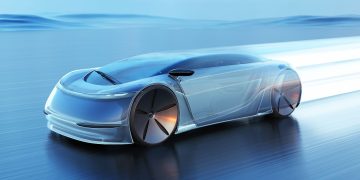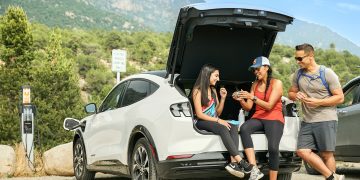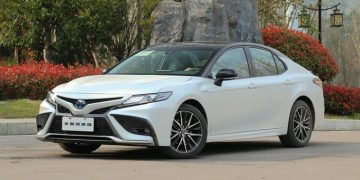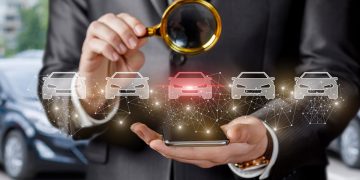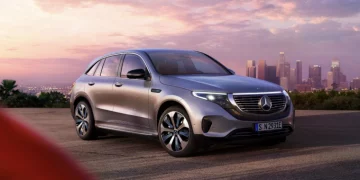Introduction: The Charging Conundrum
Electric vehicle (EV) ownership has steadily risen in popularity as more consumers recognize the environmental, financial, and technological advantages of electric mobility. However, despite significant progress, one challenge that continues to hinder the widespread adoption of electric vehicles is the issue of charging infrastructure. While EVs promise lower operating costs, reduced emissions, and energy efficiency, the availability and speed of charging options remain a key concern for potential buyers.
Fast-charging solutions have emerged as a critical component in alleviating these concerns, offering the promise of significantly reducing charging times and improving the overall convenience of EV ownership. In this article, we will explore how advancements in fast-charging technology are revolutionizing electric vehicle ownership, making it more accessible to the general public, and transforming the way we think about the practicality of EVs.
The Charging Problem: Why Speed Matters
For traditional internal combustion engine (ICE) vehicles, fueling up is a quick and straightforward process. Drivers simply pull into a gas station, fill up their tanks, and continue on their way. In contrast, EV owners typically need to charge their vehicles for extended periods, with charging times often ranging from several hours to a full day, depending on the type of charger and the battery size. This stark difference in convenience is one of the major obstacles to the mainstream adoption of electric vehicles, particularly for people who need to travel long distances or don’t have access to home charging.
The time required for EV charging can vary significantly depending on the charging infrastructure in place. Level 1 chargers (standard home outlets) can take up to 20 hours to fully charge an EV, while Level 2 chargers (commonly found at public charging stations) typically take between four and six hours. However, for most EV owners, access to a Level 3 charger—or “fast chargers”—could provide a game-changing solution to this dilemma.
Fast-Charging Solutions: An Overview
Fast-charging technology has made significant strides in recent years. Level 3 chargers, or DC (Direct Current) fast chargers, are capable of delivering significantly higher power levels than their Level 1 and Level 2 counterparts. These chargers can provide a substantial charge in a fraction of the time it takes to fill a tank of gasoline in a traditional vehicle. The introduction of ultra-fast chargers, such as those capable of providing up to 350 kW or more, is helping to further reduce charging times and make EV ownership more convenient.
The key to fast-charging technology lies in the ability to deliver high-power DC current directly to the EV’s battery, bypassing the vehicle’s onboard charging converter. This allows the battery to charge at a much faster rate, significantly reducing the time spent at charging stations. In addition, the development of new battery chemistries, such as lithium iron phosphate (LiFePO4) and solid-state batteries, is also playing a crucial role in enabling faster charging and longer battery life.
The Role of Ultra-Fast Charging in EV Adoption
The introduction of ultra-fast charging stations—often capable of charging a vehicle’s battery to 80% in under 30 minutes—could have profound implications for EV adoption rates. By reducing charging time to a more acceptable and manageable level, fast-charging technology addresses one of the most significant concerns for potential EV buyers: range anxiety.
Range anxiety is the fear of running out of battery power before reaching a charging station. For many consumers, this fear has been a major barrier to the adoption of electric vehicles. Fast-charging solutions, by reducing charging times and increasing the availability of high-speed charging stations, help mitigate this concern. As a result, EV owners can feel more confident in their ability to travel long distances without worrying about finding a charging station or waiting for hours to charge their vehicle.
1. Convenience for Long-Distance Travel
One of the primary advantages of fast-charging solutions is their ability to make long-distance travel more practical. While charging times with traditional chargers can make road trips with electric vehicles difficult, fast-charging stations can ensure that EVs are back on the road in a fraction of the time.
Ultra-fast charging stations allow for charging on the go, enabling drivers to take long road trips without worrying about extended stops at charging stations. With widespread deployment of fast-charging infrastructure along major highways and transit corridors, electric vehicles could become a viable alternative for long-distance travel, reducing the dependence on gasoline-powered vehicles.
2. Increased Charging Accessibility
In addition to reducing charging time, the proliferation of fast-charging stations helps make EV ownership more accessible to consumers living in urban areas, apartment complexes, or rural locations where home charging may not be feasible. For those without access to dedicated parking spaces or home chargers, public fast-charging stations offer an alternative solution. The expansion of fast-charging infrastructure across urban centers, suburban areas, and highway rest stops will enable EV drivers to charge their vehicles at convenient locations.
Moreover, many automakers are now investing in their own charging networks, with companies like Tesla and Rivian developing proprietary fast-charging infrastructure. These initiatives not only enhance the availability of fast-charging stations but also create an ecosystem of fast-charging options that cater to the specific needs of each automaker’s customers.

The Technological Advances Behind Fast-Charging Solutions
The growth of fast-charging infrastructure is driven by several technological advancements in battery chemistry, power electronics, and charging network design. Below, we discuss some of the key innovations contributing to the revolution of fast-charging solutions.
1. Battery Technology Advancements
The development of new battery technologies is central to improving fast-charging performance. Lithium-ion batteries, the most common battery chemistry used in electric vehicles, are improving in terms of charging speed, energy density, and thermal management. For example, the development of solid-state batteries, which promise to be safer and offer faster charging times, is gaining momentum. These batteries could ultimately enable even faster charging and longer ranges.
Additionally, fast-charging systems are becoming more intelligent, with batteries able to better handle high charging currents without suffering damage or degradation. This progress in battery chemistry ensures that EVs can charge faster while maintaining their long-term performance.
2. Ultra-Fast Charging Stations
One of the most groundbreaking advances in fast-charging technology is the advent of ultra-fast charging stations. These stations can provide up to 350 kW of power, drastically reducing charging time. This leap forward in charging technology is essential for enabling a seamless EV experience, particularly for long-distance travel and for consumers with high usage demands.
Charging stations are now being deployed along major highways and transit routes, where drivers can expect to find multiple high-power chargers. Additionally, some companies are incorporating “battery swapping” technologies into their systems, where users can quickly exchange their depleted battery for a fully charged one, further decreasing downtime and improving efficiency.
3. Smart Charging Networks
Smart charging infrastructure is also an important aspect of fast-charging solutions. These systems optimize charging speed and ensure that the grid is not overwhelmed during peak charging hours. By using machine learning algorithms and data analytics, smart charging stations can predict peak demand times, adjust charging speeds based on grid capacity, and even integrate renewable energy sources, such as solar and wind, to power the charging stations.
Overcoming Challenges: The Road Ahead
While fast-charging solutions hold tremendous promise for revolutionizing electric vehicle ownership, there are still several challenges that need to be addressed.
1. Charging Infrastructure Deployment
To fully realize the potential of fast-charging technology, a global network of high-speed chargers needs to be established. This requires significant investment in infrastructure, as well as partnerships between governments, automakers, and energy companies to ensure that fast-charging stations are accessible in key areas.
2. Cost of Fast-Charging Solutions
While the cost of charging an EV remains competitive compared to gasoline vehicles, the price of fast-charging stations and the technology behind them remains a barrier. Overcoming the financial constraints of deploying ultra-fast chargers will be essential to achieving universal access and making fast-charging an attractive option for consumers.
3. Grid Capacity and Sustainability
Fast-charging stations require a significant amount of energy, which can put pressure on local electrical grids, especially in high-demand areas. A sustainable solution for fast-charging infrastructure must account for energy sources, grid capacity, and environmental concerns to ensure that the adoption of electric vehicles aligns with broader sustainability goals.
Conclusion: The Future of EV Ownership
As fast-charging technology continues to evolve, it is set to transform electric vehicle ownership in profound ways. The combination of faster charging times, widespread charging infrastructure, and cutting-edge battery technology will address some of the most significant obstacles facing EV adoption. As these advancements continue to evolve, the future of electric vehicles looks brighter, more accessible, and more convenient for consumers around the world.



